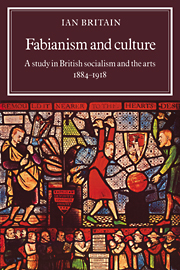Summary
… to everyone who wishes to study Socialism duly it is necessary to look on it from the aesthetic point of view
(William Morris)Except with regard to Morris himself, and a few other major socialist artists, little consideration has been given to the aesthetic or broader cultural aspects of the British socialist movement of the late nineteenth and early twentieth centuries. The revival of that movement in the early 1880s, following the disillusionment in various radical quarters with the domestic and foreign policies of the recently elected Liberal government, was one of the most striking political developments of the day; though the extent of its long-term significance in various directions is not at all a clear-cut matter. It is hardly surprising, therefore, that historians should have devoted so much time to working out, and debating, how far the new socialist organizations were related to other equally striking developments of the period, such as the growth of ‘new’ and more overtly political forms of trade unionism and the emergence of a mass-based Labour Party.
It would be superficial to regard such developments as purely political in their nature or origin; and the economic climate is often invoked as a factor in explaining why disillusionment with the existing political parties and methods should have become so acute by the early 1880s. That climate had taken a distinct turn for the worse around 1873, with the onset of a severe depression.
- Type
- Chapter
- Information
- Fabianism and CultureA Study in British Socialism and the Arts c1884–1918, pp. 1 - 22Publisher: Cambridge University PressPrint publication year: 1982

